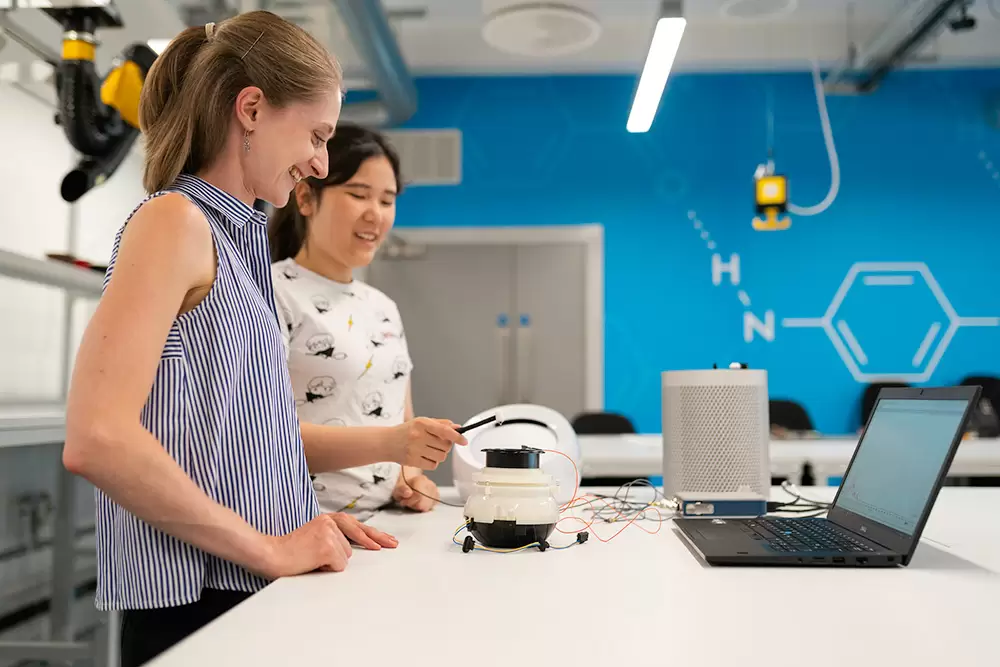Women are already a minority in STEM professions. A new report has found the COVID-19 pandemic is pushing them further to the margins.
Commissioned by Industry, Science and Technology Minister Karen Andrews and produced by the Rapid Research Information Forum, the report found that disparities in the distribution of domestic workloads and reduced career opportunities for women have been exacerbated by the novel coronavirus.
Women have seen disproportionate increases in caring responsibilities and disruptions to working hours, job security and paid work capacity compared to men — and it’s most acute for women with children under the age of 12.
Australian Academy of Technology and Engineering CEO Kylie Walker, who helped coordinate the report, said that without urgent attention to address the issue, the recent gains for women in STEM could be lost.
“There is some evidence to suggest that during times of economic downturn, programs and initiatives that have unfortunately been seen as ‘nice to have’ rather than essential tend to get dropped,” she told create.
“For example, one organisation said it was removing paid parental leave and reverting to the government guarantee for parental leave. [And] one university has already announced the closure of childcare centres.”
The report noted that, as of 2017, there were about 7500 women employed in STEM research fields in Australia, compared to approximately 18,400 men. It also found that women comprised 29 per cent of the labour force that had a university STEM qualification, and just 8 per cent of the labour force that had a VET STEM qualification.
Walker said governments need to look at regulatory approaches to ensure these numbers are not eroded.
“I would suggest a rethink about the rules around applications for grants, such as extended deadlines, to allow for the fact that there has been an additional impact on women compared to men,” she said.
Diversity needed
Evidence demonstrates the benefits of diverse research workforces and the risks of homogenous research workforces; for example, technology and treatments designed by and for male users or patients that do not work as well for women.
With this in mind, Walker said that as a nation, we need to ensure there is diversity in STEM across the board.
“The Federal Government can look at things like regulatory mechanisms to encourage and incentivise collaborative R&D between private and academic sectors, so that those jobs continue to be there for the researchers,” she said.
“Another research paper we did found that as many as 10,000 jobs in research are likely to disappear in Australia due to the pandemic.”
This is particularly problematic for women, as casual and short-term contract roles — which tend to employ high proportions of women — are likely to be the first to go. In fact, the report found that women are 1.5 times more likely to be in insecure jobs in the overall university workforce.

Justine Romanis, National Manager of Professional Diversity and STEM at Engineers Australia, said the report was “a timely reminder for employers of STEM professionals of the importance of maintaining their gender equity focus”.
She pointed to the report noting the potential danger of STEM employers failing to closely monitor and mitigate the gender impact of their decisions.
“Another important point to make when it comes to the retention of women in engineering is about the long-term effects of losing female engineering talent at a crucial time as they move into senior leadership roles,” Romanis said.
“This usually occurs at a critical stage of their careers, which means they fail to make it into the pipeline for leadership positions, leading to a lack of female role models, which is a major issue within the engineering profession.”
After the crisis
While the rapidly changing nature of the pandemic makes drawing conclusions about its ongoing impact difficult, the report authors did make one prediction: that it will have a greater effect on women in STEM overall.
“Given the compounding effect of career breaks and gender-based discrimination on career progression, it is reasonable to assume the pandemic is likely to have more long-term negative implications for women in STEM than men,” they wrote.
This was also the conclusion of a major US and German study, which found the effects on women are disproportionate to men and are “likely to outlast the actual epidemic”.
What’s unclear is the impact it will have on women who faced barriers to entry, retention and progression in STEM pre-COVID-19. This includes women from culturally and linguistically diverse backgrounds, Aboriginal and Torres Strait Islander women, women with disability and women who identify as LGBTQI+.
“Indigenous people are less likely to be employed in professional, scientific and technical services than non-Indigenous people (2 per cent compared to 7 per cent), and early analysis suggests the pandemic risks exacerbating long-standing inequities for Indigenous Australians,” the report authors wrote.
“Long-term implications of the COVID-19 pandemic for the Australian research workforce as a whole are serious … Current and future women in STEM are particularly at risk if important advances of recent years wind back.”
